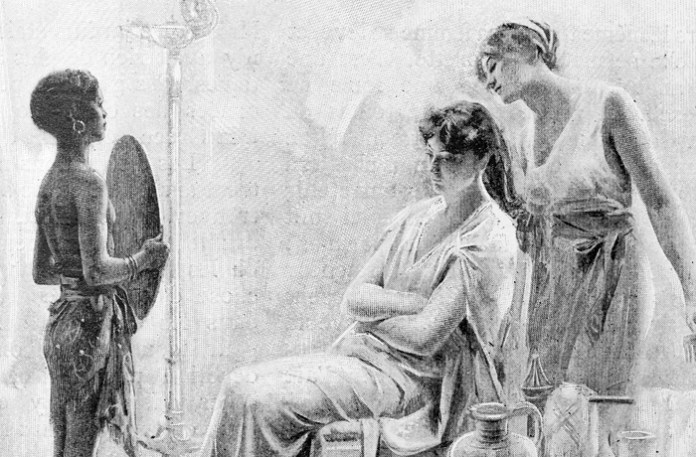For Harpham’s explanation of how England came to view the enslavement of others as both a violation of nature and a legitimate institution, all roads ultimately lead back to Rome, and Roman law in particular. He writes that “in early-modern culture, the reception and development of Roman tradition took multiple forms. [Roman ideas] became the basis for a common consensus about what slavery was and where it came from.”
The first portion of *The Intellectual Origins of American Slavery* effectively explains how the tradition of slavery from Rome—which held that all people were naturally free but could be enslaved “as a result of accident or misfortune”—carried the day in early-modern England over Aristotle’s contention that “some persons were fitted by nature to be ruled as slaves.” Slavery, in this framing, appeared more as a circumstance affecting individuals than the rigid, racial institution it would become in the New World.
The second section of *The Intellectual Origins of American Slavery* revolves around the English perceptions of Africa and African slavery, showing how “before the English slave trade began in earnest another, more gradual shift” took place, one that, “in a broad sense,” transformed “the English image of Africa.” Harpham offers a “prehistory” of the English slave trade, drawn largely from Richard Hakluyt, a promoter of English exploration and colonization, including in Africa.
Harpham argues that as the English learned more about Africa, they grew more at ease with slavery, though not for the reasons usually assumed. Because they judged African nations to be “civilized,” he writes, “[s]uch a shift could at first seem to have worked against the development of the slave trade… inasmuch as scholars have often maintained that the trade drew upon the impression that Africa was ‘beyond the pale of civilization,’” borrowing a phrase from Winthrop Jordan’s *White Over Black*, long a touchstone of the field. Yet, Harpham contends this view has it backward.
The author argues that the recognition of African “civilization” supplied the foundation for England’s slave trading. As English observers gained knowledge about African practices of government, punishment, war, and commerce, they uncovered “a method to account for the sources of slavery, to explain in detail how free persons were made into slaves.”
By the middle of the 17th century, he contends, the English no longer worried over the ethics of buying and selling human beings. That the “sources of African slavery could be traced back into the continent and that these arose from the order and sophistication of African life” offered moral clarity.
In this sense, *The Intellectual Origins of American Slavery* locates the emergence of a proto-positive good thesis long before Thomas Roderick Dew or John C. Calhoun: slavery was not merely tolerated, but rationalized to foster civilization. Crucially, Harpham insists, this defense preceded the full articulation of a racial logic.
English slavery in the Atlantic world began, he argues, less as a direct association between blackness and bondage and more during an “uncertain search after the causes of complexion.” The author devotes much of a chapter to English debates over the origins of African skin color, which laid the initial intellectual foundations of slavery with little reference to race.
Harpham’s thought-provoking rejection of the view that European slavers were motivated solely by racist greed subverts conventional academic and political orthodoxies. Yet, it ultimately raises the question of why this matters in the long run. He insists his study is about ideas, not intellectuals. Yet, ideas only carry weight insofar as they shape human action.
Alfred Nobel’s dynamite was designed to split rock, but it soon blew up soldiers whether he liked it or not. So too, whether slavery was justified by Roman law or English accounts of African order mattered little to the captive bound for the Caribbean. It did nothing to lessen the sting of the lash.
Indeed, the epilogue of Harpham’s book recounts how “original” ideas about slavery and the treatment of the enslaved quickly shifted to more familiar ground in the late 17th century. The planter class of the Caribbean charted new validations for the brutal punishments used to control a black population ripe for insurrection, while also craving more bodies from Africa to feed the labor needs of their plantations.
—
### The German Resistance to Hitler
It is here that Harpham’s introduction offers an answer to why ideas ma
https://www.washingtonexaminer.com/premium/3872705/samuel-harpham-book-review-origins-of-american-slavery/


